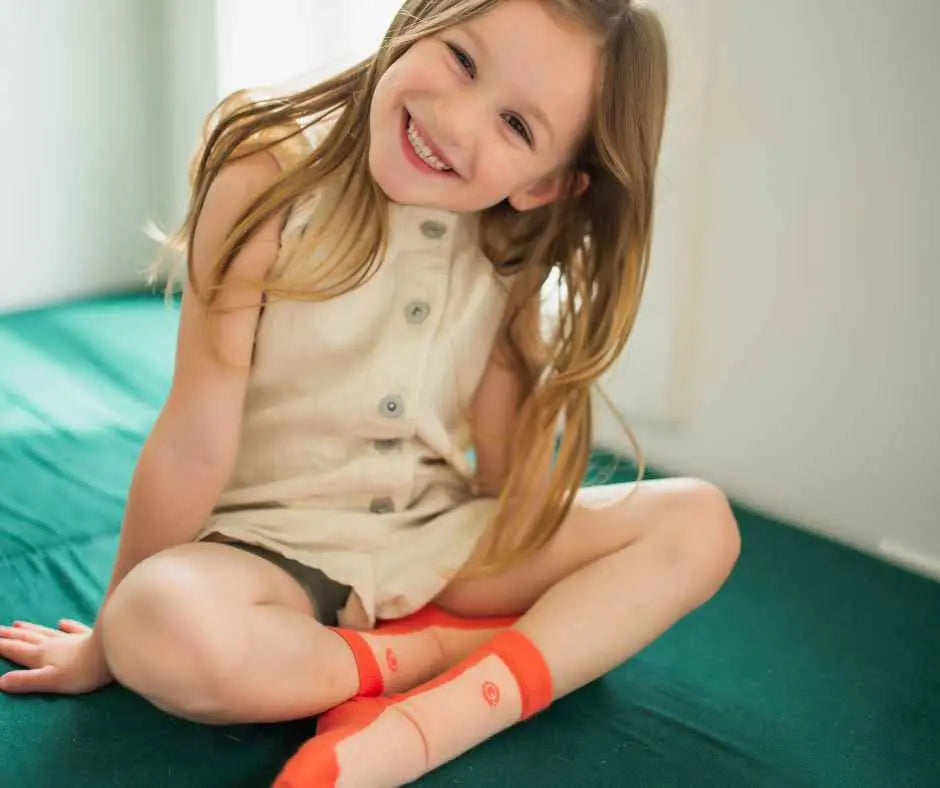
As a parent, we understand the frustrations of shopping for sensory or sensitive kids who refuse their clothing, specifically socks and underwear.
You might have gone through an endless cycle of purchasing something only to find that your kids will not wear it.
While there is no perfect composition or design, there are a few attributes that we have learnt that are helpful when shopping for your sensitive kid (or even yourself).
This article talks about what to look for when shopping for socks and underwear. The lessons learnt may also apply to other forms of clothing.
So what does one look for when shopping for socks or underwear for a sensitive kid?
#1 Avoid bulgy seams
Choose flat or invisible toe seams (“Seamless toe” socks). Bulgy seams, especially around the toe area, is probably the most common reasons why most sensitive kids refuse to wear socks. Traditional socks are linked across the toe with a traditional (Russo) seam that often stands out of the toe.
On the left is one of Q for Quinn’s cotton crew socks (that comes in different colours and now also in ankle length), and on the right is a typical kids/toddler sock that you will find in most stores.
Flat seams around the underwear can also make a difference, especially in sensitive areas close to the crotch and bum areas.
Are you wondering about the different types of socks that are suitable for sensory kids? The picture below shows the inside of all the different styles of our socks.

Socks featured, from left to right:
Pure (no dye) crew socks -These socks are our traditional crew socks and come in many different colours and styles. We have our undyed collection here but also our neutral, “uniform” colours. This style also comes in ankle length.
Pure (no dye) ankle socks with terry
Heavyweight cotton socks (with terry all over)
Mid-weight merino wool socks (terry on foot)
For a complete collection of the best seamless socks for sensitive kids, click here
#2 Avoid uncomfortable or "scratchy" fabrics
Some fabrics can be particularly itchy. Carefully choose softer fabrics like organic cotton, linen, tencel. These fabrics if chosen correctly, will often feel like second skin. We also like cotton because it is much more breathable than polyester. Merino wool is also an option for sensitive skin, but it may be worth trying a pair on first before committing to a larger online order because some children may be allergic to wool.
#3 Choose the right length
In most cases, we have found sensory kids prefer a shorter length. This is why we developed our Pure ankle socks. Choosing a quarter or ankle length
#4 Avoid socks with patterns
The way socks are knitted, a heavily patterned sock will have loose threads on the inside of the socks.
#5 Choose a tagless option
Tags inside of clothing and underwear provide another source of discomfort with something not flat rubbing on the sides or the back. Look or ask for where the tag is placed on the clothing items. Socks typically do not have any tags on them, but underwear might.
Tagless may also involve a heat transfer print like the one below.

#6 Pay attention to the size guide
Finding the right size will ensure there is no excess fabric that can create uncomfortable bunching or the piece of clothing is not too tight, which could also choose discomfort.
Pay attention to the sizing chart and try a pair or two first before committing to a larger order again.
Please note, insights are shared from Q for Quinn’s own experience serving and designing products for sensory children. If you have any questions or feedback, please get in touch with us at hello@qforquinn.com.











Leave a comment